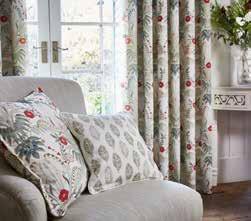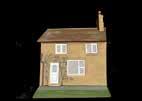







OUR SERVICES
Boiler Breakdowns
Boiler Servicing
Radiators & Pipes
Tanks & Cylinders
Toilets & Taps
Leaks & Bursts
Showers
Clearing Blockages
Pipework Replacement
Gas Safe Certified











OUR SERVICES
Boiler Breakdowns
Boiler Servicing
Radiators & Pipes
Tanks & Cylinders
Toilets & Taps
Leaks & Bursts
Showers
Clearing Blockages
Pipework Replacement
Gas Safe Certified


It may be just me but in the pantheon of weirdly designed animals, the giraffe has to be at, or near the top of the list.
Evolutionary theory tells us that they developed their extraordinarily long necks in order to reach the most succulent vegetation found at the tops of trees.
My simplistic brain can’t help but think…well why did they not just eat something lower down? And what did they eat before their necks stretched so much?
Don’t get me wrong, I have absolutely nothing against giraffes. In fact their faces are really rather appealing, all angles, big eyes and long, long eyelashes. They even have the equivalent of fingerprints as no two giraffes have the same coat pattern. But they just seem so blinking awkward!
It’s a wonder any baby giraffes survive the fall from mum’s…errr…rear end… to the ground. Given the fragile nature of the long newborn neck, it must be very easy for it to break in the event of a less than safe landing.
That fact alone has me amazed that the species managed to survive and evolve. And have you ever seen giraffes fighting?
Apparently they find it very difficult to lift their legs off the ground to kick out, which is what most ruminants would do. So, instead, they bash their necks together…really, really hard.
Honestly, they are so badly designed that their necks are too long for them to drink unless they splay their legs out before dipping towards the water source. I mean… really!
Their circulatory system also has to cope with the fact that their blood pressure dips dangerously low when they bend their head to drink. The jugular veins have developed incredibly elastic walls and large one-way valves that allow the veins to expand significantly and prevent the blood from flowing back to the brain when the giraffe’s head is lowered.
The poor creatures can’t even lie down for a proper kip either. They do “lie” down with their long legs tucked underneath them, but the neck is usually still upright. Occasionally, and only for very short periods of normally not more than 5 minutes, giraffe can sleep with their head resting back on their rump.
Five minutes sleeping!
I could not be a giraffe!
Joking apart, there is a serious side to this article – June 21 is World Giraffe Day – a day to remind us that giraffes are in fact an at risk species. There has been an almost 30% population decline over the past three and a half decades, leaving an estimated population of 117,000 individuals.
They may be ungainly and awkward, but they do deserve to be respected, cared for, and allowed to flourish, as does every other species on this planet we all call home.

































Full

Computer
Autologic
Air

Courtesy












@Prioritystairlifts


■
■
■
■
■
■
■
■










What is AcuCalm at Home?
It’s an at home wellness service providing a combination of playlists of soothing imagery audio along with acupressure ear beads. There are various options including couples and family packs, plus an option to subscribe to just the playlists without the acupressure ear beads. It’s an affordable monthly subscription that you can cancel at any time.
Who is it for?
Everyone! Whatever your age or level of health, relaxation and stress reduction brings an improvement in your overall wellness. Both acupressure and guided relaxation audio have decades of research showing the potential for improvements in a wide range of conditions such as IBS, sleep, anxiety, menopausal symptoms, chronic fatigue and pain. AcuCalm at Home offers a range of options by providing a wide variety of audio tracks, some addressing specific areas, some more general, plus detailed charts showing you different ‘protocols’ for your acupressure ear beads. Each month we send you 20 AcuCalm beads and each ‘protocol’ generally uses 5 on one ear at a time. Allowing for a break in between applications, this gives you the opportunity to experiment with different acupressure protocols plus your choice of audio tracks. You’ll find more information on the website which you can go to by scanning the QR code opposite.
What are AcuCalm ear beads?
Acupressure has been used for thousands of years in China and Japan and traditionally a small seed was taped to specific acupressure points on the ear. Today’s version is a minuscule metal ball attached with tape. There are various versions on the market, ours are titanium on clear tape and we’ve been through months of testing poor quality products until we got to this one.

Is this hypnotherapy?
Whilst I am a qualified CBT Hypnotherapist, AcuCalm at Home is a unique blend of wellness methods which you won’t find replicated elsewhere. No need to be concerned that you will feel weird or be put into a trance, you’re in completely in the driving seat. Some people will love the combination of the AcuCalm beads with the audio and others may choose to use just the audio tracks.
How is AcuCalm at Home unique?
In 2020 my Breast Cancer Oncologist suggested I try NADA Ear Acupuncture, offered by most Breast and Prostate Charities to help with hot flushes. The short story is that I ended up training as an NADA Practitioner myself and have developed AcuCalm as a unique blend of ear acupuncture and Guided Relaxation. AcuCalm at Home has evolved as I have had people wanting to feel the benefits of this powerful combined treatment, but who live too far away from me. By exchanging acupuncture for acupressure (using the same pressure points on the ear), I can now offer this modified version of AcuCalm to everyone, no matter where they live and at an affordable price.























Over 20 years ago we purchased our first carpets from T. Nutt & Sons who also fitted them. Today ALL the carpets and floor coverings in our four bedroomed house were supplied and fitted by the above company. We have just replaced the hall, stairs and landing carpets plus the lounge carpet but only because I wanted a change of decor!! Second time round for Nutts. The experience of choosing carpets is second to none. No-one could be more helpful with suggestions on style, colour etc. The fitters have been excellent in every way. If you want friendly support with expertise, this is the place to come!!









This is a sudoku
1 square grid
81 cells 9 3x3 blocks
1 simple rule: Use all the numbers 1-9, with no duplicates allowed, in any row, column, or block.
These puzzles are devised by the brilliant Professor Rebus. For more of his puzzles visit www.pitcherwits.co.uk



Method:
1. Put the chicken, spices and 1 level tbsp sriracha in a large bowl. Mix everything together using your hands, until the chicken is evenly coated. Cover and chill for at least 1 hour, or overnight.
2. Preheat your oven to 200°C/fan 180°C/gas 6.
3. Spread the chips out on a large, non-stick baking tray in a single layer and spray with low-calorie cooking spray. Spread the drumsticks out on another non-stick baking tray. Put the chips on the shelf below the chicken and cook for 20 minutes, then turn
Summertime makes us think of eating al fresco whilst soaking up the sun. With a mix of spicy sticky chicken, light crispy chips and cool tasty salad, this dish is perfect for those chilled out days ahead. For more information visit www.slimmingworld.co.uk
everything and swap over the trays. Cook for a further 20 minutes, or until the chicken is cooked through.
4. At the same time, toss together the celery, cucumber, lettuce and radishes. Mix the yogurt with the chives, lemon juice and garlic granules, and season lightly.
5. Stir the yogurt dressing through the salad and scatter over the reserved chives. Brush the remaining sriracha evenly over the chicken. Serve 2 drumsticks per person with the chips and salad
Ingredients:
• 8 chicken drumsticks, skin and visible fat removed, flesh scored
• 2 tsp smoked paprika
• ½ tsp ground allspice
• 2 level tbsp sriracha
• 800g floury potatoes, such as Maris Piper or King Edward, cut into chips
• Low-calorie cooking spray
Serves: 4 Syns per serving: 1/2


For the salad:
• 4 celery sticks, chopped
• 1 cucumber, halved lengthways, deseeded and sliced
• 2 little gem lettuces, shredded
• 200g radishes, chopped
• 200g fat-free natural yogurt
• ½ small pack fresh chives, chopped, reserving some to serve
• Juice of 1 lemon
• ½ tsp garlic granules
Ready in: 55 minutes (plus 1 hour to marinade)







Maintenance free Timber Alter native Windows & Doors from Evolution. With


Maintenance free Timber Alternative Sash Windows from the Bygone Collection. The most energy efficient, authentic, timber alternative sash window on the market. Exceptional build quality, with an unprecedented 12 year guarantee.







Aluco manufactures iconic steel replica, heritage, Art-Deco or industrial-styled glazing solutions. Aluco delivers expertly crafted, cleverly designed, and above all, authentic in style, steel-look windows and doors.



•
•

•
•
•
















I have recently acquired a magnificent piece of social history: a Reckitt and Sons vintage demonstration box of the type used by travelling salesmen. It contains sample items of many of the products Reckitt’s made. Their earliest creation was laundry starch in 1819. The dolly blue bag and black lead followed in 1852. It is now a worldwide company.
Alongside the dolly blue bag is a “cream tint” bag. We have asked many people through our social history talks, and no one is able to remember the red and cream bag or knows what it was for.
We would welcome any information on this item. One of my favourite products was, and still is, Windowlene -pink and fragrant, smeared on your glass would bring your windows up a treat, polished to a shine with newspaper.
Reckitt’s has been at the forefront of health and household products for two hundred years, developing brands like Dettol, Steradent, Harpic and Strepsils.
For me, the smell of Brasso particularly brings back memories of my father polishing his army buttons and buckles. He was a regular in the Sherwood Foresters and is still as well turned out as ever. He used to sing a song about “Shine up your buttons with Brasso” but only the clean version! My husband, Paul, learned the other version in the school cadet corps.


When we show this very special item at our presentations, it elicits warm and fond memories of familiar items we have grown up with and will continue to grow old with.
Janet and Paul Barrass are All Around the Shire. Find us on or email: oldfield512@btinternet.com for more
























Pitcherwits® are crossword puzzles where some of the clues are in pictures.

Across
1 Go round a meerkat duo? Not likely! (4,1,6)

8 Near to shut, say, the shop (5-2)

11 Break it, upon a state that’s ideal (7)
16 Correct level of fancy trim to hang out (5,6)

Sound easy? It’s not called “Pit-your-wits” for nothing! The mixture of cryptic and picture clues, combined with Professor Rebus’ unique sense of humour, will keep you entertained for hours. These puzzles
Across
5 Basking shark spotted in the resort (3)
7 Under-water replacement player? (3)
10 Producer of brewed Red Beer (7)
14 I’ve come to compete (3)
15 Good enough to have some sticky stuff (3)
Down
2 Turn out a selfish leader? (4)
3 Alternative of fermentation lees (4)
9 Over-priced soak? (5)
12 Push out on arduous trip (4)
13 Two people, together with a bit of a list? (4)
1 It’ll be getting foggy if you badly mis-govern it (7,4)
4 Bunny-walker to be made into abbot’s fir (7,4)
6 Lie about cube being jeans colour (3,4)
7 Frugal cutting down under Swedish leader (7)






















It goes without saying that Margaret Atwood is best known for The Handmaid’s Tale; but this Canadian author has written over 50 books – mostly fiction but also essays and even poetry.
Old Babes in the Wood comprises 15 Atwood short stories. Short stories tend to be something you love – because they’re short and pithy and easily read; or hatebecause you don’t get time to develop a relationship with the characters.
But these are Margaret Atwood short stories and as with most of her writing she takes them to another level.
As you’d expect they are sharp and smart and in parts funny about the foibles and eccentricities and humanity of people – in this collection, often older people. People are always centre front in her tales. Some of the stories are sad – they’re quite personal to the author who lost her partner fairly recently. In other places she strays almost into sci-fi. There’s a real range to get your teeth into.
Are they fairy stories? That’s for you to decide.





Milliners design and make hats and other headgear such as caps, berets, bonnets, fascinators and bridal headpieces, using materials such as felt, fabric, fur, leather, straw, artificial flowers, ribbons, braids and feathers.
Milliners mark out and cut patterns to create designs for hats. They then cut out the various components and assemble the hat. This may involve twisting, rolling, folding, reinforcing, sewing, steaming and pressing various components. They may also alter or renovate hats. They may also be involved in displaying hats or preparing them for sale.
Skills
Milliners may perform the following tasks:
• Interpret fashion trends and use them in designing hats and other headgear.
• Mark and cut patterns to desired shape and size, lay the pattern onto fabric and cut around it.
• Shape, cut, twist, roll, fold and reinforce fabrics and other materials with wire to gain desired effect.
• Assemble hats by hand or using a sewing machine.
• Steam and press material into shape by hand and, if needed, stiffen it by using a special solution.
• Sew trimmings such as ribbons, buckles, braids or chains onto hats.
• Operate semi-automatic blocking machines for mass production.
• Alter, renovate and re-block (re-shape) existing hats.
• Package and dispatch hats for customers.
• Display, fit and sell hats and accessories.
Historically, milliners produced or imported an inventory of garments for men, women, and children and sold these garments in a millinery shop.
The millinery industry benefited from industrialisation during the nineteenth century. In 1889 in London and Paris, over 8,000 women were employed in millinery, and in 1900 in New York, some 83,000 people, mostly women, were employed in millinery. Since the massmanufacturing of hats began later in the 20th century, the term “milliner” is usually used to describe a person who applies traditional hand-craftsmanship to design, make, sell or trim hats primarily for a mostly female clientele.
The term “milliner” or “Milener” originally meant someone from Milan, Italy, in the early 16th century. It referred to Milanese merchants who sold fancy bonnets, gloves, jewellery and cutlery. In the 16th to 18th centuries, the
meaning of “milliner” gradually changed in meaning from “a foreign merchant” to “a dealer in small articles relating to dress”. Although the term originally applied to men, from 1713 “milliner” gradually came to mean a woman who makes and sells bonnets and other headgear for women.
Milliners work independently based on job order specifications or their designs, observing the regulations regarding work safety, health protection, environmental protection, and ensuring quality and efficiency. They combine their uniqueness, innovation, and technical skills and use different materials and auxiliary materials. In some cases, they plan and organise their schedules in cooperation with their customers’ various needs. They also collaborate with the team or the apprentice to the presentation and sale of the products.
The millinery industries apprenticeship culture is commonly seen since the 18th century, while milliner was more like a stylist and created hats or bonnets to go with costumes and chose the laces, trims, and accessories to complete an ensemble piece. Millinery apprentices learned hat-making and styling, running the business, and skills to communicate with customers.
A wooden hat block is an intricately carved wood form shaped by skilful woodworkers. Hat blocks are the tools of the trade for milliners in creating a unique hat crown shape. Some of the hat blocks are ensembled with crown and brimmed, while some are only with crown or brim or designed for fascinators. Milliners always have an extensive collection of different hat blocks because there are specific hat sizes and custom shapes for every hat block. In the blocking process of a hat, milliners used push pins and a hammer to hold the adjustable string along the crown’s collar and the brim’s edge.
A floral-making iron is a unique iron used by milliners to create different floral petals or leaves as the ornament for hat decoration. In the past, candles were used to heat these irons with various shapes of metal in one set.
Milliners often use something called Buckram, a stiff cotton (occasionally linen or horse hair) cloth with a loose weave. Millinery buckram is impregnated with a starch which allows it to be softened in water, pulled over a hat block, and left to dry into a hard shape. Millinery buckram comes in many weights, including lightweight or baby buckram (often used for children’s and dolls’ hats), single-ply buckram, and double buckram (also known as theatrical buckram or crown buckram).


















• Septic Tank Emptying & Repairs
• Drain Jetting
• Drain Repairs
• Groundswork
• Road Sweeping
• Gully Emptiying

• Dust Supression
• High Pressure Drain Jetting
• CCTV drain inspection
01629 815222

You might think you’re doing them a favour, but it usually leads to floppy soft growth, which is more likely to collapse in rain or wind – not that we’re expecting this summer to have any of that! Staking is pretty important but don’t tie them in too closely, they need to bend with the wind but if you do lose stems, cut them back cleanly and you may get new growth below.
Prune philadelphus, forsythia and currant now they’ve finished flowering. They produce next year’s flowers on this year’s growth so pruning early gives more growth before winter.
If you want to lift this year’s tulips to clear beds or pots, wait till the foliage has turned yellow – generally about six to eight weeks after flowering. Cut off the stems, remove the foliage and leave the bulbs to dry then store in a paper bag somewhere dry and cool. Offsets –the little bulblets which grow alongside the main bulb can be pulled away, and treated as above then replanted in autumn about eight to ten inches deep. The main bulb can be planted around six inches deep in late autumn and even through until December or early January, although that display will be later.

Often mistakenly called a ‘hawk’, the kestrel or windhover is perhaps our most familiar bird of prey, and it is a falcon related to the diminutive merlin and the awesome peregrine. This was the bird of prey which seemed to survive the nadir of our raptors during the bad days of the 1950s to the 1980s. Ruthless persecution and use of persistent pesticides eradicated most birds of prey like common buzzards, sparrowhawks, peregrines, and red kites. These species hung on in the western parts of Great Britain but were largely extinct in and around the Peak District. The exception to this was the kestrel which seemed to quietly go about its business and was largely under the radar. This species also benefitted from the new motorways and dual carriageways which proliferated from the 1960s onwards and provided abundant verges full of mice and voles for kestrels to hunt. Indeed, it was in such places that most people became familiar with the windhover. They also adapted well to high-rise living in towns and cities and to disused or abandoned old quarries. In the absence of predation by or competition with the other raptors, the kestrel thrived, and along Peak District gritstone edges, it was possible to see ten or more birds in a single afternoon. However, in recent years it seems that the kestrel population has shrunk somewhat, and this may be because the other birds of prey have recovered


considerably and re-colonised the region in good numbers. Both common buzzard and peregrine falcon will compete for space and even predate the smaller kestrel, and so their numbers and distribution have now reduced. Indeed, the most frequently spotted birds of prey are probably sparrowhawk (a species which is certainly thriving), and common buzzard. The latter can be seen soaring over breeding sites with several birds in the air at any one time. The other coloniser is of course the spectacular red kite, though these still lag behind buzzards in the Peak. Another bird of prey yet to recolonise is the osprey which passes through on migration but as yet (I think) has not nested. Hopefully, the moorland hen harriers are starting to return, though peregrines still seem to do better in the urban areas than they do in the wild spaces of the Peak.
As numbers of these species continue to grow, there will be more competitive interactions between them, and with other potential rivals for space such as the raven. None of these birds likes its neighbours to be too close!






Professor Ian D. Rotherham, researcher, writer, broadcaster on wildlife and environmental issues in the Peak District and elsewhere, is contactable on ianonthewildside@ukeconet.org. Follow his website www.ukeconet.org, blog www.ianswalkonthewildside.wordpress.com/ & Twitter @IanThewildside










Treat yourself to a luxury break at the 4* Gold Award winning Little Red Hen House. An elegant and cosy holiday home just a 7 minute drive from award-winning and dog-friendly Warkworth beach.


✽ 2 spacious en-suite bedrooms
✽ A fully enclosed garden
✽ 2 small to medium dogs welcome (3 upon request)
✽ Fully equipped kitchen, including an American style fridge freezer


✽ Perfect for exploring the stunning Northumbrian Heritage Coastline
✽ Close to a range of dog friendly pubs, cafes and restaurants in stunning Warkworth
✽ We have fast fibre Wi-Fi and smart TV’s Search ‘The Little Red Hen House’








